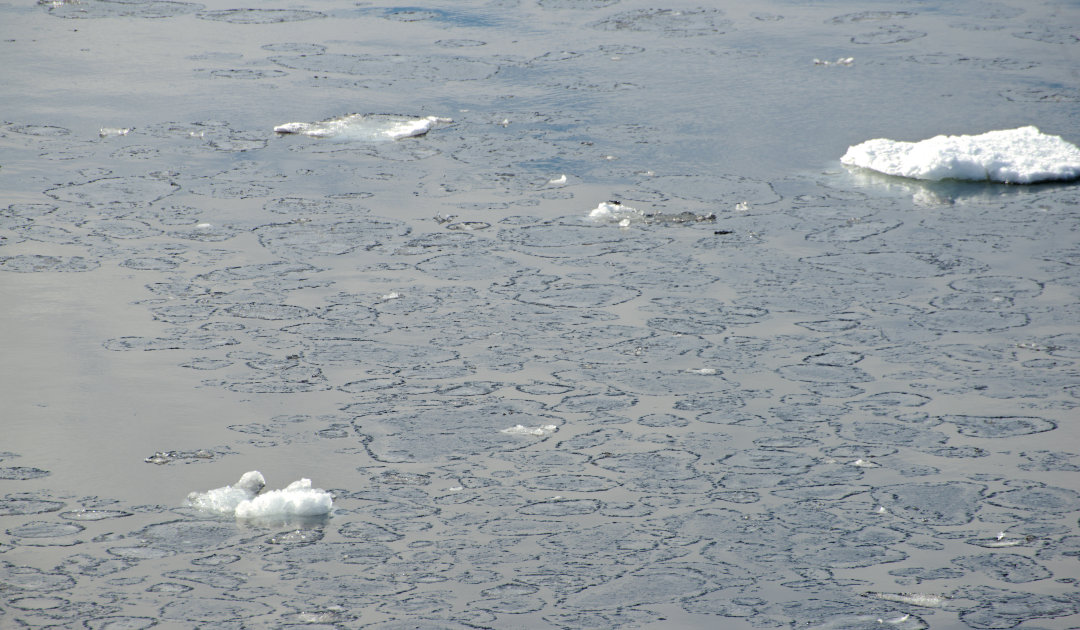
This year, the Arctic sea ice had behaved very exceptionally: in the summer it had retreated between Svalbard and the western part of the Russian Arctic to 85 degrees North, other parts had been ice-free very early in the season. The MOSAiC expedition found hardly any solid ice floes at the North Pole in August and the strongest Russian icebreaker has to repeat its test drive to the North Pole because of too thin ice. Now the formation of sea ice is also being delayed and is massively lagging behind the normal time span, as measurements of the various institutions show.
Unusual heat masses over the Laptev See region in the eastern part of Russia prevent the sea ice from forming properly, as can be seen on maps of meereisportal.de. At the same time, slightly warmer deep-sea water masses are likely to have penetrated the lower part of the marine region and been pushed upwards through the continental slope. Thus, the formation of sea ice is further disturbed. At present, the formation of sea ice in the Laptevsee is massively lagging behind the usual pace.

As experts explain to the media, this delay in sea ice formation, together with the meteorological conditions in the Siberian Arctic, is an unprecedented process and is consistent with science’s predictions about the effects of climate change. “2020 is another year that coincides with a rapidly changing Arctic,” explains Dr. Zack Labe, a postdoctoral researcher at Colorado State University. But this delay and the extraordinary behaviour of the Sea journey does not come as a surprise, because since 2007 the formation of ice has been shifting further and further backwards and the extent of the Arctic sea ice decreases with each year. This is also confirmed by Walt Meier of the National Snow and Ice Data Center in Boulder, Colorado.

According to various sources and according to the experts, it should not be long before less than 15 percent of the entire Arctic Ocean is ice-free and thus the Arctic is generally considered ice-free. It is predicted to happen between 2030 and 2050. “It’s just a question of “when,” not “if,” Walt Meier told the media. This event is accelerated by the warming of deep water, which is transported north from the southern latitudes, as a recent study showed. In addition, by sunkight further heating the ice-free surface, the water heats up and stores this heat and thus a negative feedback is achieved.

Apart from the physical effects, the biological consequences can also be enormous. Because phytoplankton, the basis of all life in the Arctic Ocean, requires not only sunlight, but also nutrients transported by sea ice and currents. And they will be greatly reduced if the ice is removed, which will be very bad for the entire food cycle of Arctic ocean dwellers. Polar bears, which can move to the pack ice only late in the season anyway, are likely to find even less food, because the seals, their prey, also find less. The cascade would be unstoppable. And many scientists have been warning about this for years, but without being heard by politicians and drowned out by the loudly screaming climate change sceptics.
Dr Michael Wenger, PolarJournal
More on the subject:





